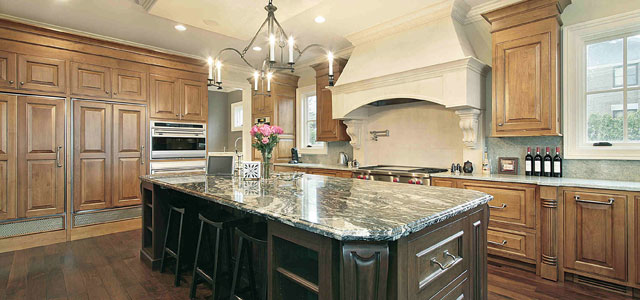Homeowners want an appealing and cutting-edge kitchen, but a functional one, too. These decor desires determine the choices and elements that that homeowners incorporate into their kitchens. Granite comes in a vast selection of color and pattern options. Any buyer shopping for a kitchen counter gets tempted to choose one based on looks alone. A combination of different factors determines the best countertop for a particular kitchen.
Durability, resilience, maintenance needs, and cost factor into the counters selection process. Here is a guide on granite selection for kitchen countertops:
The Right Fit For Your Kitchen
Every home has different countertop needs. It is best to work out these requirements beforehand. Consider the application, look, and atmosphere desired. The particular function required from the counter influences the countertop selection process. In some homes, countertops work primarily as kitchen workstations. In others, they double up as an area to have meals. These factors determine the appearance and type of granite a buyer chooses.
Homeowners can choose between two granite finish options that suit their specific needs. The honed look appears matte and soft while a polished finish is shiny in appearance.
The countertop material determines the types of edges available. Most countertops feature square edges, but others come with decorative edges. Granite counters come in straight, bevel, ogee, bullnose, and knife edge profiles.
Choosing The Right Granite Color
The granite color selection process isn’t a difficult one. The diversity of granite color choices makes it a favorable countertop material. A buyer can find a particular granite color and style that fits well into their kitchen scheme.
Counters in lighter shades complement darker spaces with little or no natural light. Dark-toned countertops work for a kitchen with lots of natural light. Play around with different themes if torn between two color choices. Go with a lighter counter color and a darker tone for the cabinetry. Consider long-term color options because kitchen remodels are not done on a frequent basis.
Make sure that the countertop color blends into your color scheme. For renovation purposes, go for a color that you can remodel your kitchen around.
Engineered Versus Natural Countertops
Countertops made using natural stone bring a unique appeal to a kitchen. With variations of shades and patterns, it’s hard to find two pieces of granite that are alike
Most countertops function as kitchen workstations. It means that they need a given level of resilience. Natural granite offers high resistance against scratches and dents. The counter works well as a heat resistant kitchen surface. The natural choice provides extensive selections of style, color, and porosity.
Engineered countertops offer consistency in style and color. A buyer can find significant amounts of the same type. They are also available in wider color selections providing more options. The counters have almost no porosity making them scratch, stain, and chip resistant.
Selecting natural versus engineered countertops focusses on three important aspects. The chosen countertop should meet a homeowner’s want for a beautiful workstation. It should also complement the kitchen decor. It should offer practicality in function. A countertop should also withstand strains related to its particular use.
The Cost Factor
The readily available granite types come at the most affordable prices. The rare kinds of granite shipped from abroad infrequently come at higher costs.
A common misconception is that engineered stones cost more than their natural counterparts. The price of each type factors in the stone’s origin, color, and finish. Worth noting is that countertop costs do not directly relate to function and quality. All the factors combined should guide the counters selection process.
These guidelines should help with finding the best countertop for your kitchen.


